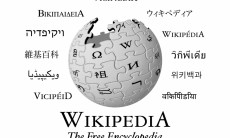Getting the right tone in your response to social media is tricky. Even the positive stories seem like accidental social media success. So I went hunting this week for examples of positive responses to social media incidents to serve as inspirational examples. Or, at least as an assurance that it can be done.

Image by Anirudh Koul via Flickr
First example: Brands in Public recently launched with a mission of showing companies what is going on in social media and letting companies manage the conversation. To give people a feel for what they were about, the social media experts there posted 200 example pages, for example for Allstate.
Unfortunately, it looked a lot like brandjacking to some folks, who spoke up about their concerns on twitter, on blogs, and in the comments of bookmarks on social tagging sites for the announcement of Brands in Public on Seth Godin’s blog. Ouch.
So what’s a social marketer to do? Adjust. Take down the pages that were perceived as looking like brand jacking exercises, and offer to put up a few free pages for selected charities. And, hopefully, institute some internal review processes to get some outside perspectives before the next launch.
Second example: . Sometimes adjusting isn’t even that hard. Youtube changed their favicon in response to a blogger’s critique. A favicon is a fairly minor part of a website, or at least it was when it was first implemented. Later, favicons evolved into a de facto standard badge that is used by fans of the service to link to their profile or to provide some graphic representation of the company referenced. So they’ve gone from being a minor luxury on a site to being a representation of your brand. And what to do when someone complains that your favicon is unreadable? Adjust, and give credit where credit is due.
I can hear you now, though–you think that’s easy for a big organization or a oft-cited expert to pull off. But even small shops have done it.
Third example: Hardwood Artisians is small company that got some attention with an article by the Washington Post, “Value Added,” that generated a lot of comments pretty quickly. What to do about this? Hardwood Artisians could hardly take down pages at the Washington Post, and they couldn’t just retool a graphic to be responsive. Instead, they became part of the conversation–the marketing director got in the mix with the commenters, cleared up some issues with the article and contributed her own perspective. Social marketing requires full-on engagement sometimes—adjust, credit, and engage.
Evaluate your own available tools as it comes to responding to social media. Could you take down 200 pages from your Web site overnight if you needed to? Do you have a graphic artist on staff to redo a graphic if needed? Are you up for engaging with public commentators on an article about your company—and if not you, who in your company will be?

![Reblog this post [with Zemanta]](http://img.zemanta.com/reblog_e.png?x-id=bcc31e26-3c97-4662-891c-ea46a88f1c46)




